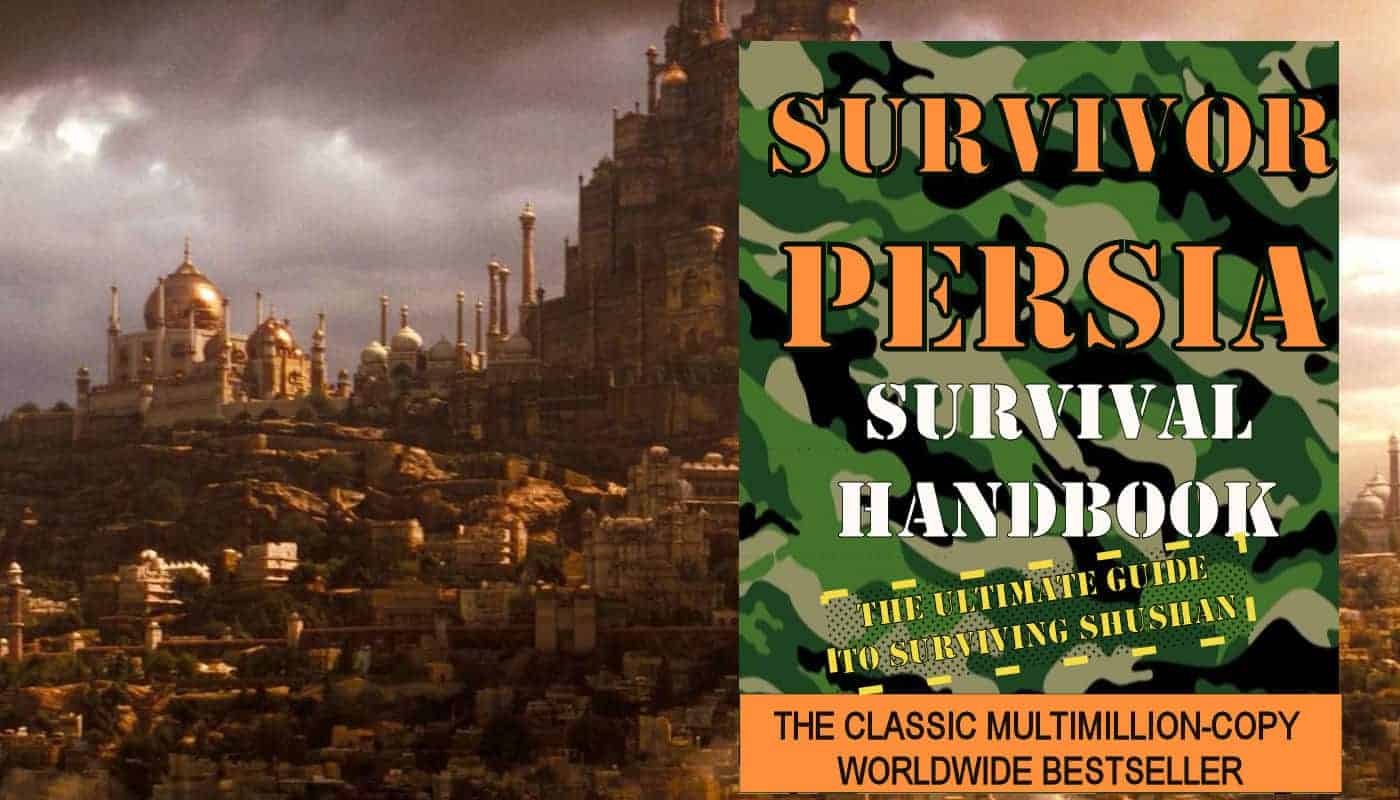Survivor, Persia!
We will be celebrating the festival of Purim very soon, so I would like to give you an overview of the history, background and significance of this festival. The Purim story begins about 900 years after the Exodus from Egypt. The Jews had been living in Israel continually, since they first entered with Joshua. For 410 years, King Solomon’s Temple in Jerusalem had been the focal point of Jewish spiritual and national life in Israel. The first major tragedy that the Jews of this era experienced was the division of the country into the northern kingdom of Israel and the southern kingdom of Judea. The northern kingdom, which was populated by ten of the 12 tribes, was eventually invaded by the Assyrians under Sennacherib, who then exiled the inhabitants. Sennacherib’s policy of forced exile and assimilation directly caused the loss of the ten tribes to the Jewish people.
Less than a hundred years later, the Jews were dealt another terrible blow. This time, the Babylonian Empire under the rule of Nebuchadnezzar invaded Israel, destroyed the Temple and exiled almost all the remaining tribes (Judah, Benjamin, the Priests and the Levites) to Babylon (modern day Iraq). Jeremiah the prophet had warned the Jewish people that there would be destruction and exile, but he also predicted that the Jews would return to Israel and rebuild the Temple and their homeland. Jeremiah even put a date on the return, declaring that the Temple would be rebuilt 70 years after its destruction. Nevertheless, there were many who did not believe that they would ever return to Israel, and felt that this exile signified the end of the special relationship between G-d and the Jewish people. The Jews quickly became acclimated to the condition of exile and built a well-organized Jewish community in Babylon and neighboring Persia (modern day Iran).
The Persian Empire eventually took over Babylon, and a military leader by the name of Achashverosh (probably Artaxeses) usurped the throne and became the supreme ruler of the Persian Empire. Based on a miscalculation, he believed that the 70-year deadline of Jeremiah’s prediction had already passed, and that the Jews must therefore be doomed to remain in exile. Since the Jews had outlived all previous empires (Egyptians, Canaanites, Assyrians and Babylonians) except his own, he became convinced that his was the eternal empire. In his mind, the permanent exile of the Jews was an indication of his empire’s immortality.
To celebrate this permanent victory, he threw a colossal party in classic sultanate style, using the holy vessels that Nebuchadnezzar had looted from the Temple in Jerusalem. Even more tragic than the party itself was the fact that the Jews in the capital city, Shushan, also participated in Achashverosh’s celebration, over the strong objections of their religious leadership. The Talmud states that it was this sin that caused the subsequent nearly fatal threat to the Jewish people.
One of the most ancient and persistent enemies of the Jewish people was the nation of Amalek, the first enemy to attack the Jews after the Exodus from Egypt. A descendant of the Amalekites, Haman, had ascended to the position of “prime minister” of the Persian Empire. This rabid anti-Semite planned an empire-wide pogrom to eliminate the Jewish people. He chose the date for this mass murder by casting lots. In Persian, the word for lot is pur. The plural form is Purim, hence the name of the holiday.
The heroine of the Purim story is Esther, a devout Jewish woman who was forcibly taken as a wife for Achashverosh. She and her uncle Mordechai, one of the religious leaders of that generation, were instrumental in saving the Jewish people from annihilation. After uniting the Jewish nation in repentance and prayer, they set about exposing Haman’s plot to the king. Haman and his equally wicked sons were executed when Achashverosh learned that he had planned to kill Queen Esther’s nation. The Jews were permitted to defend themselves against their enemies on the appointed day for annihilation, and were totally victorious. Mordechai and Esther recorded the events of Purim in the prophetically inspired Megillat Esther (literally, Scroll of Esther). The Megillah is read publicly on the night and day of the Purim festival.
Only three years after the events of Purim, King Darius, the son of Esther and Achashverosh, allowed the Jewish people to return to Israel and rebuild the Temple. The Temple was rebuilt exactly 70 years after its destruction, as predicted by Jeremiah.
Although it became part of the Bible, known in English as the Book of Esther, the account never mentions the name of G-d, though there are veiled allusions. This surprising omission actually reflects a central theme of this holiday. On Purim we celebrate the fact that the hand of G-d guides us, even at times when we do not see open miracles or obvious Divine intervention. When we read the Megillah, we are not awestruck by dramatic changes in the laws of nature, but by a series of seemingly disconnected events that ultimately resulted in the salvation of the Jewish people. Achashverosh executed his first wife and chose the beautiful Esther as his new queen. These are not miracles, but behavior to be expected from a despotic king. Nor was it a miracle that Mordechai once saved the king from an assassination plot, thereby earning his gratitude. Each event, in and of itself, was not miraculous or even exceptional. When seen in retrospect however, the series of events is seen as engineered from Above for the purpose of evoking repentance from the Jewish people and then saving them from danger.
This theme of concealment and allusion may also be the reason behind the custom of wearing costumes on Purim. The masks and costumes show that truth always lies beneath the surface, that the physical world conceals the true spiritual reality.
Anyone who is familiar with Jewish history can see the Purim pattern repeated over and over again. The fact that Judaism and the Jewish people have survived for 3,300 years is, in and of itself, not miraculous. More significantly, our survival was not merely physical, but cultural as well. We still use the Hebrew language, we read and study the Torah, we immerse in the same type of mikvah (ritual bath), as that used at Masada 2,000 years ago. We put on the same type of tefillin (phylacteries) that were worn in Qumran 1,700 years ago.
Anti-Semites have attempted to eradicate us physically and culturally, missionaries have tried to convert us, while others have tried to tempt us into assimilation, but we still exist as a distinct group. We do not look different from the surrounding populations and we have not been geographically isolated, yet we stand apart. Twice in history, we were brutally exiled from our Land and we returned twice: once after the Babylonian Exile and once in contemporary times with the establishment of the State of Israel and the incredible ingathering of Jews from all over the world to our Land.
If all this is not sufficient evidence of Divine Providence, consider the fact that all of these events were predicted by the Torah over 3,000 years ago: the destruction of Israel and the return to Israel, the worldwide exile, anti-Semitism and the eternity of the Torah are described in the following passages.
“I will make the land desolate; and your foes who dwell upon it will be desolate.”
“I will scatter you among the nations, I will unsheath the sword after you; your land will be desolate and your cities will be in ruin.”
You will call forth amazement, reproach and scorn from all the nations to which G-d leads you.
Indeed it is a nation that dwells alone, and is not counted among the nations.
And the Lord your G-d shall return you from your captivity and have compassion upon you; and He shall return and gather you from among all the nations to which the Lord your G-d has scattered you. … And the Lord your G-d shall bring you into the Land that your fathers inherited.
This song [the Torah] shall testify against them as a witness; for it shall not be forgotten in the mouths of their children.
Purim, therefore, is the prototype for Jewish survival during exile. The Divine Providence hidden in apparently random events has ensured that we have survived, and even thrived, in the face of continual threats to our existence. Purim demonstrates the fulfillment of G-d’s promise to the Jewish people that:
…despite all this, while they will be in the land of their enemies, I will not despise them nor will I reject them to obliterate them, to annul My covenant with them — for I am the Lord, their G-d.

